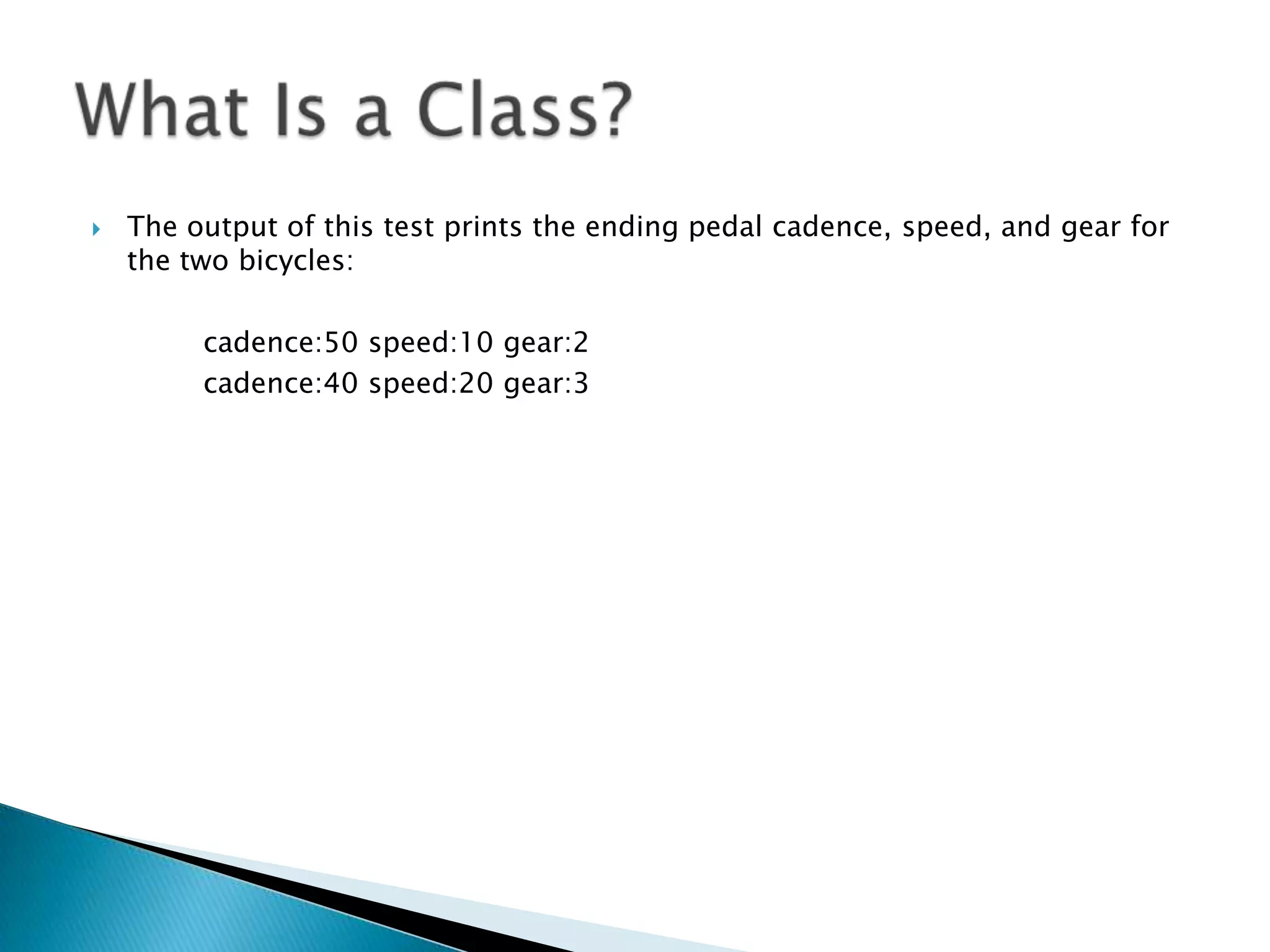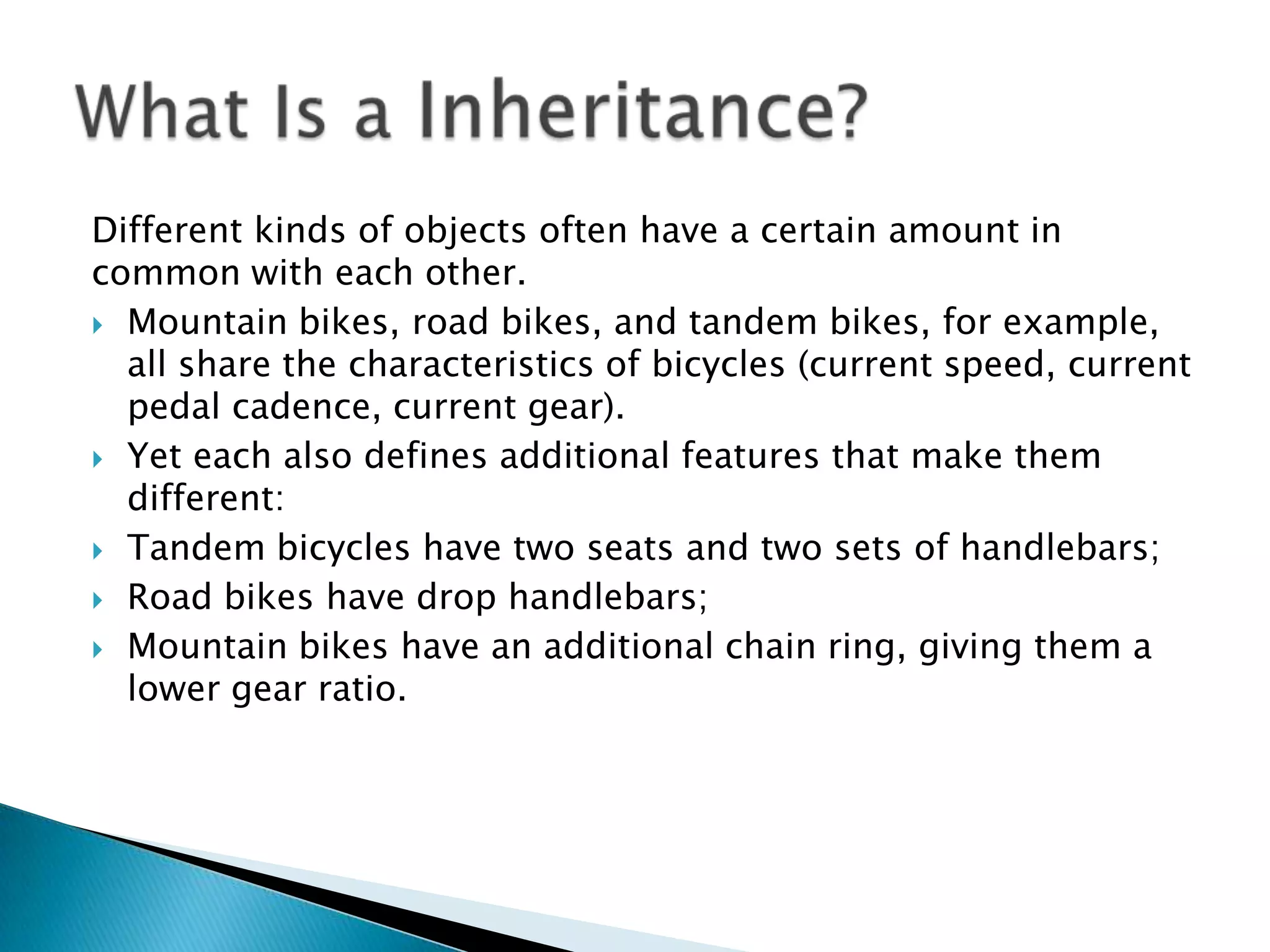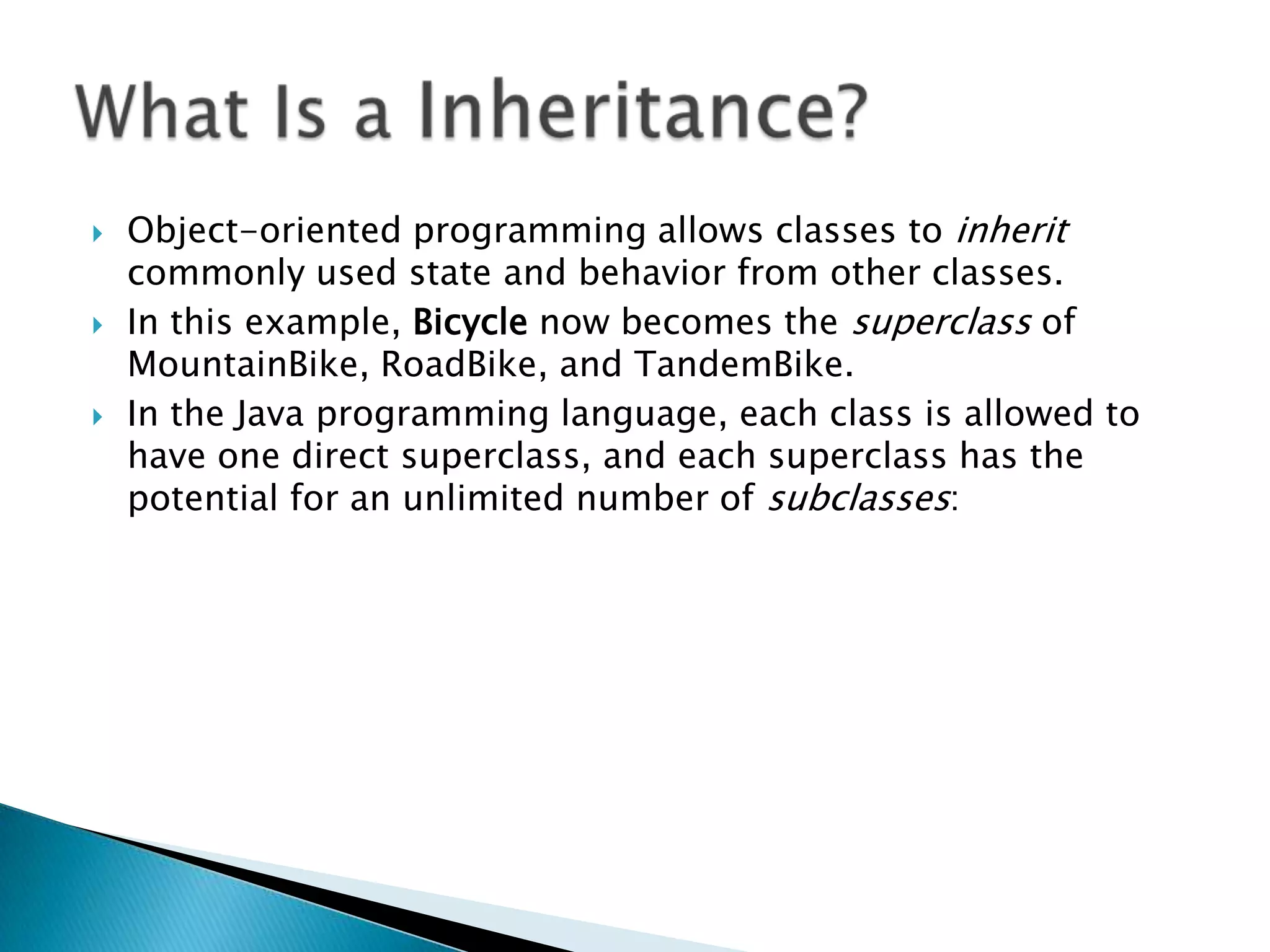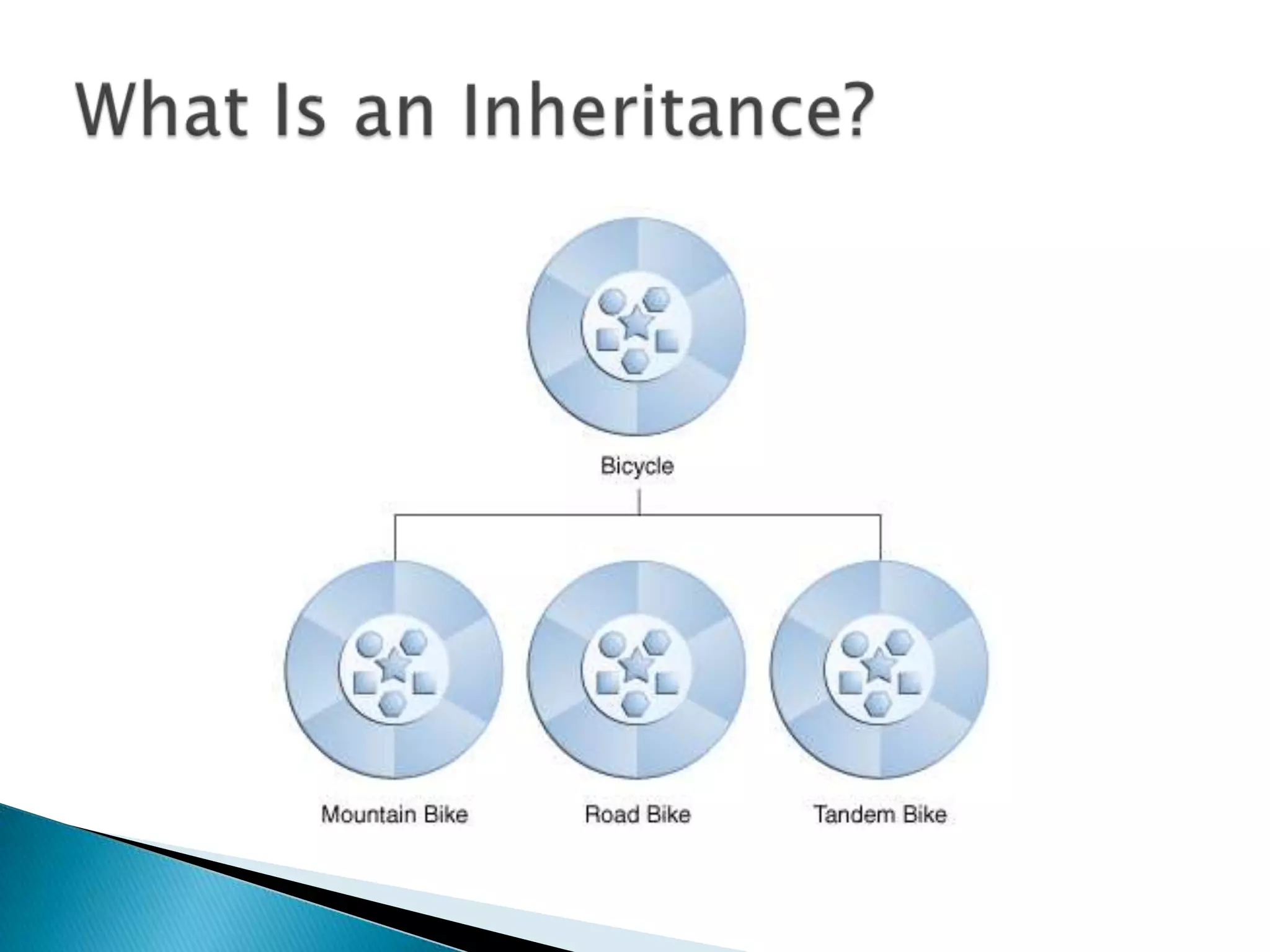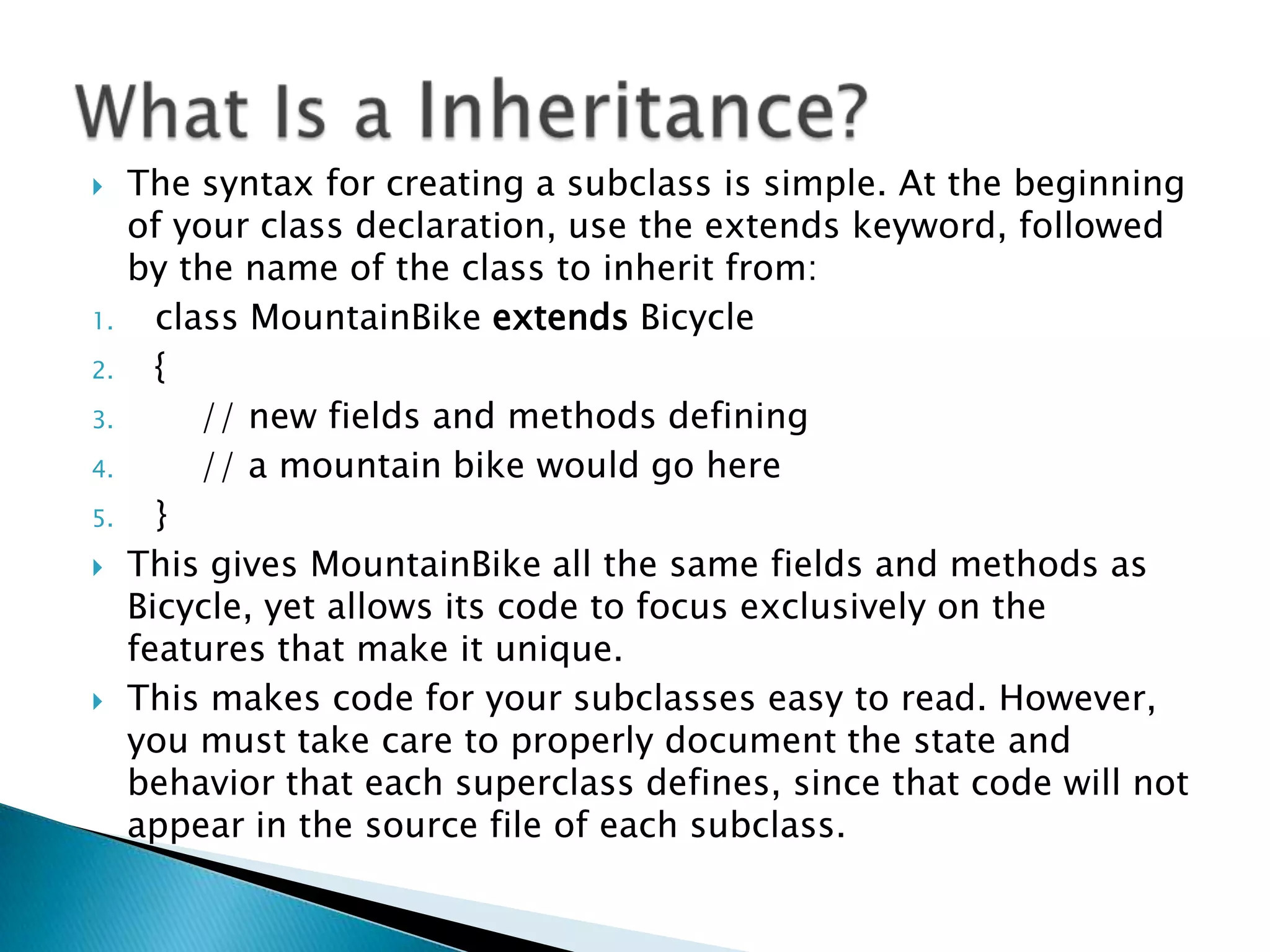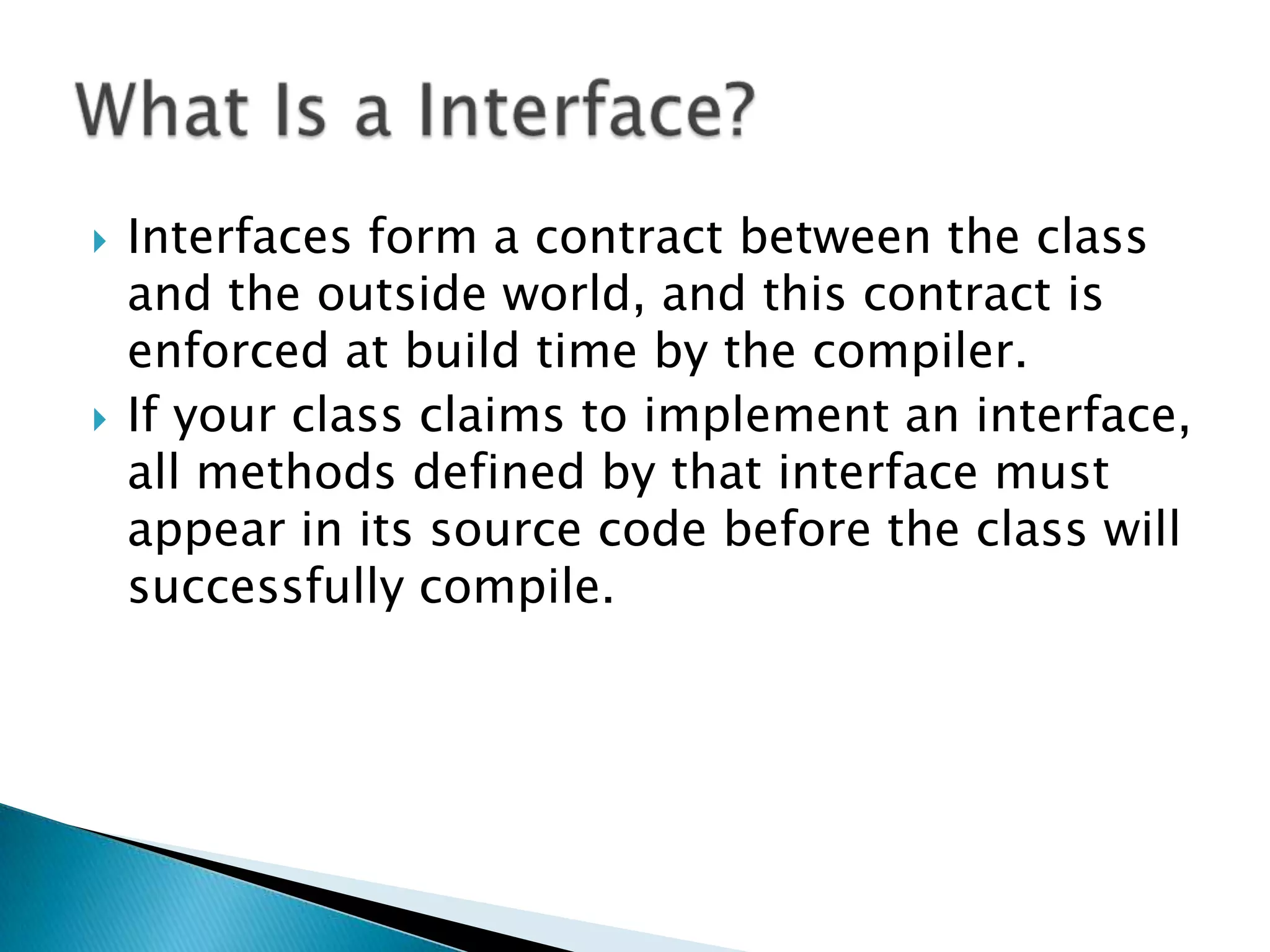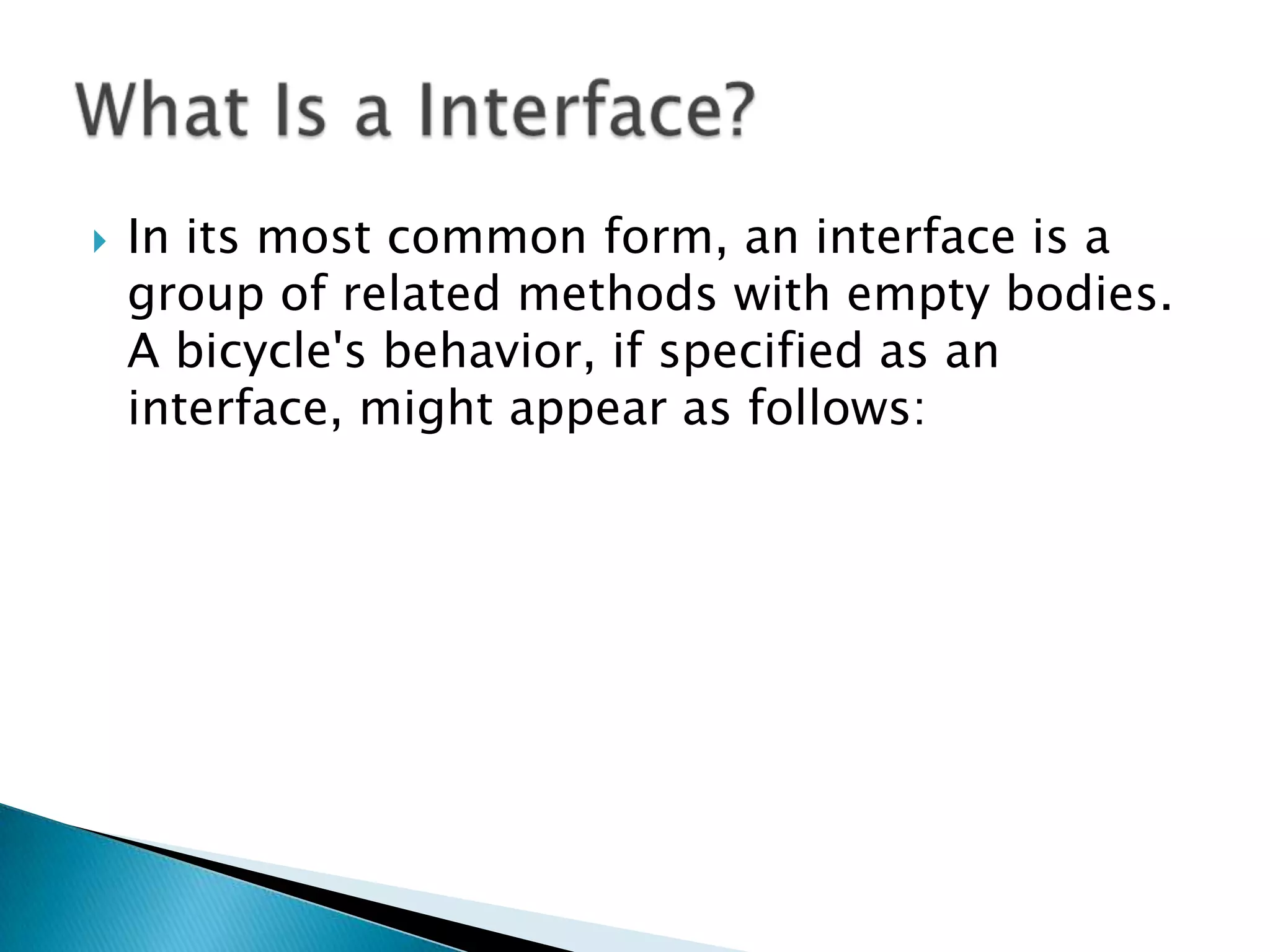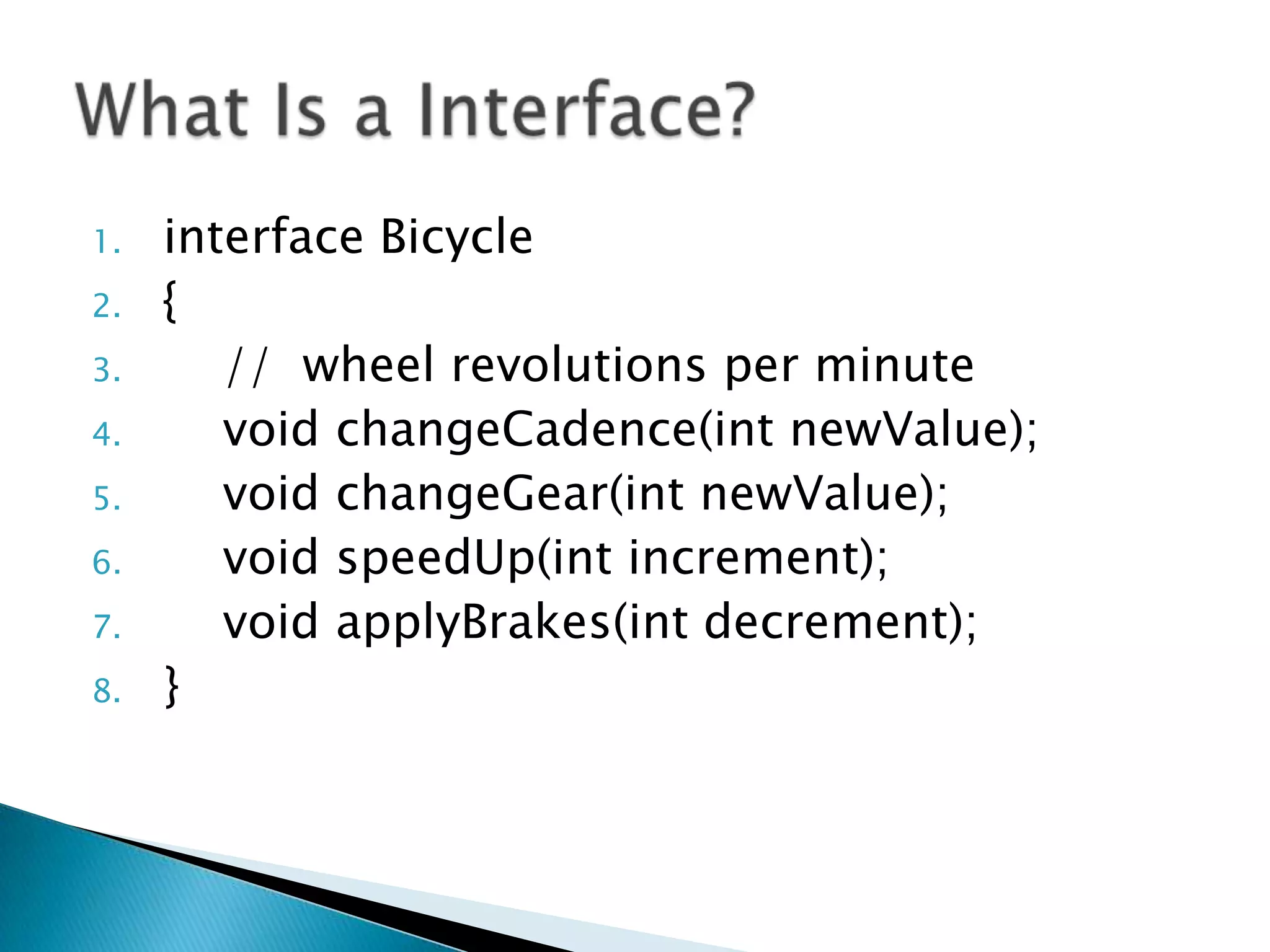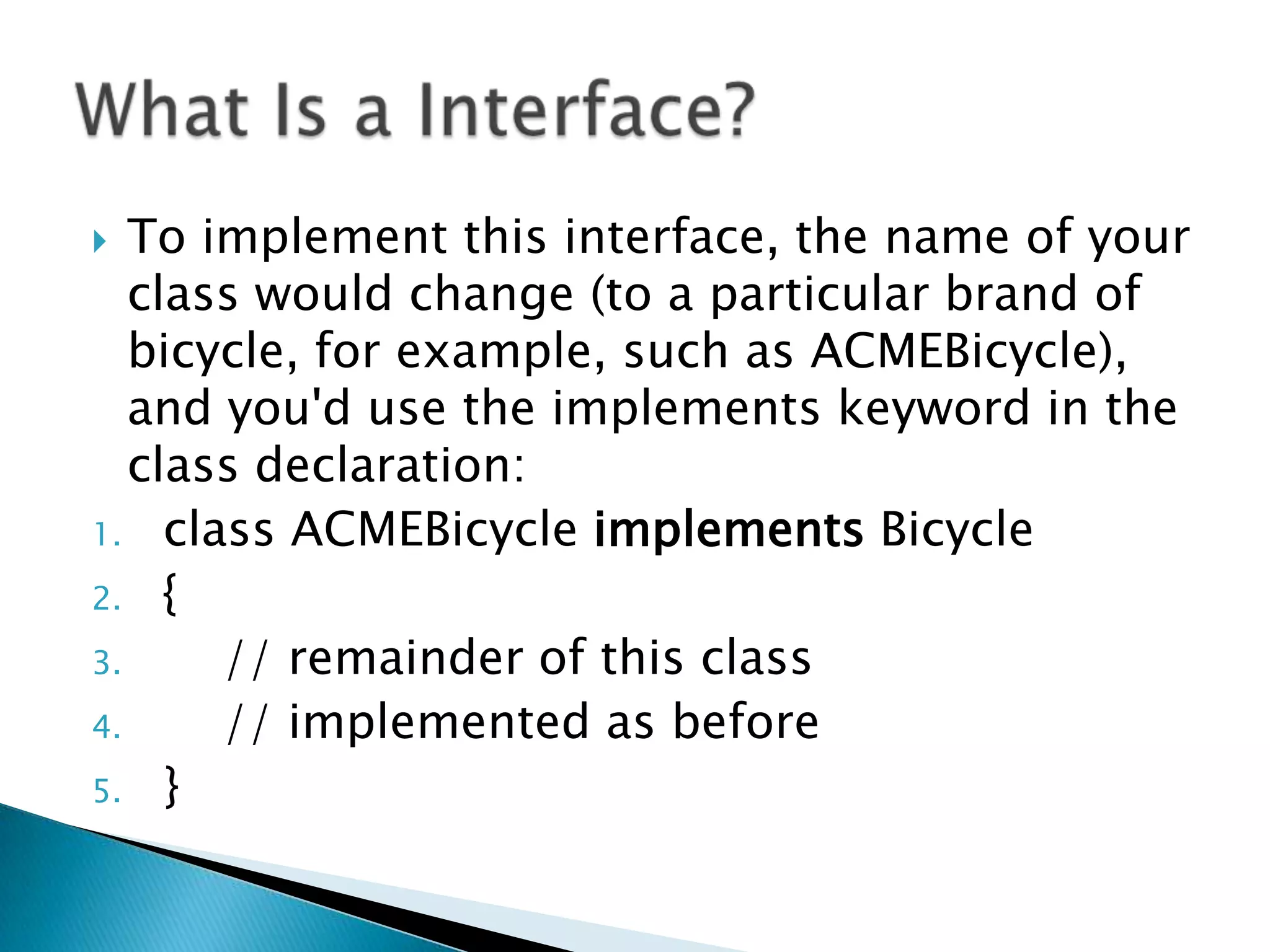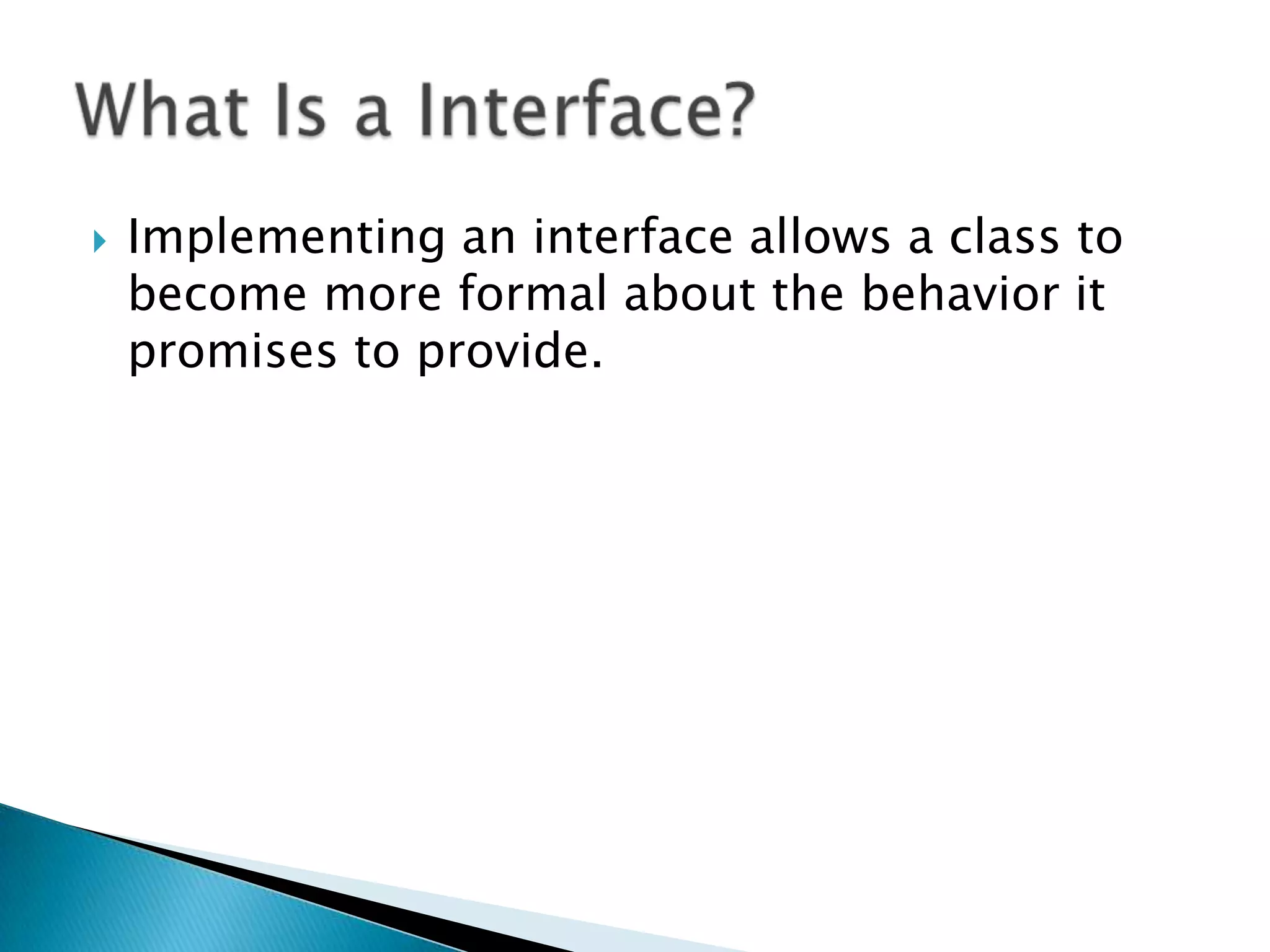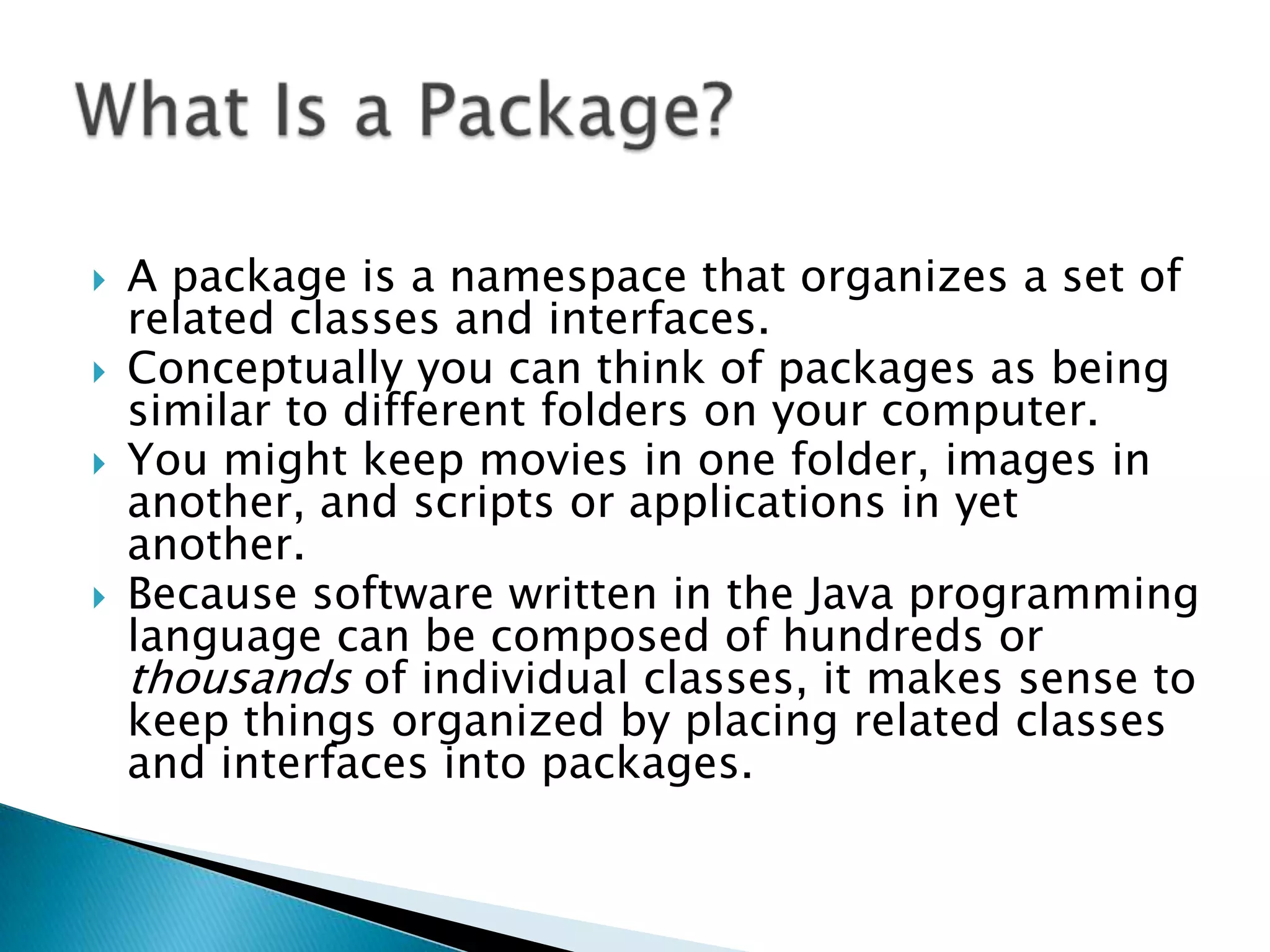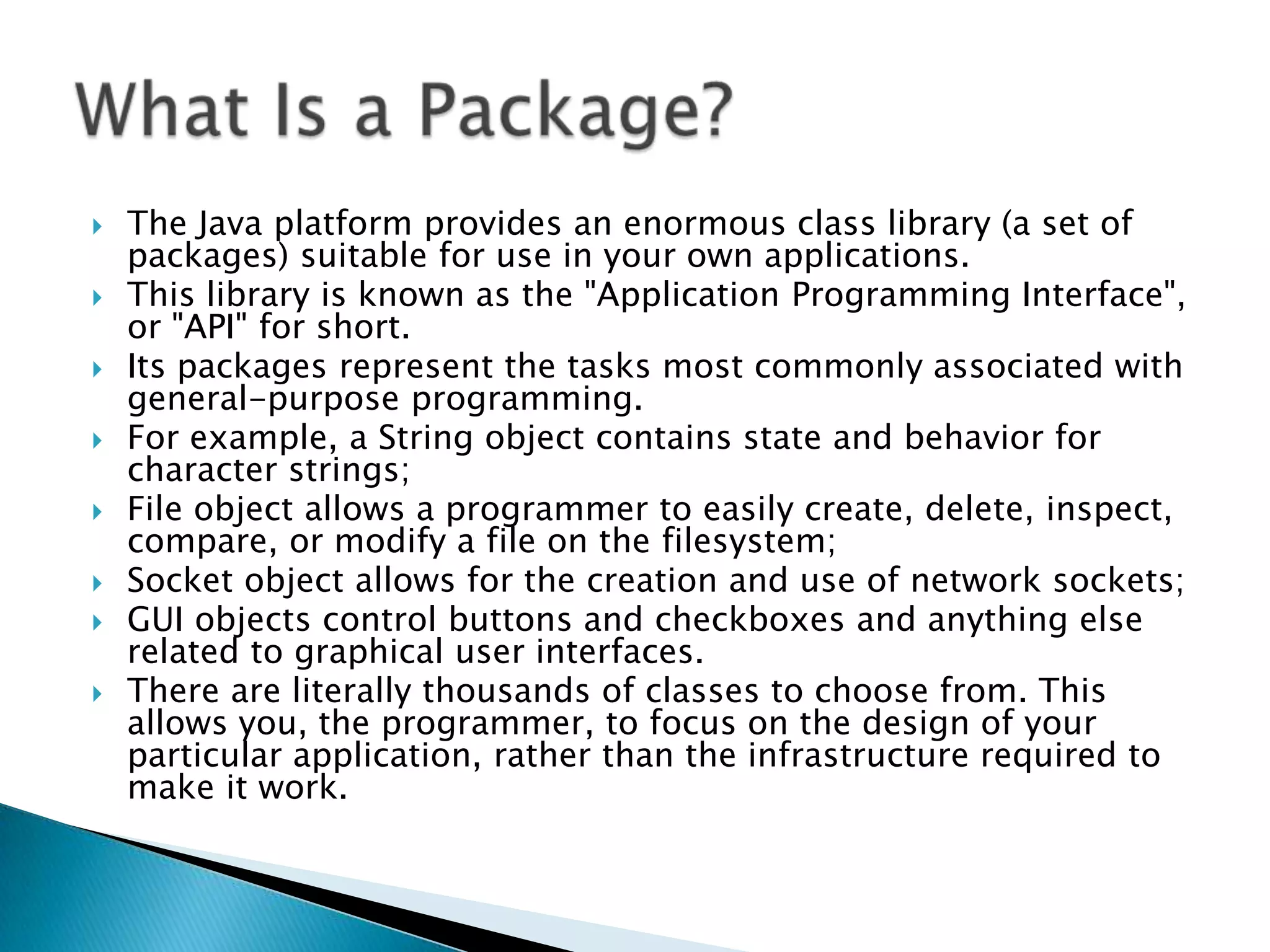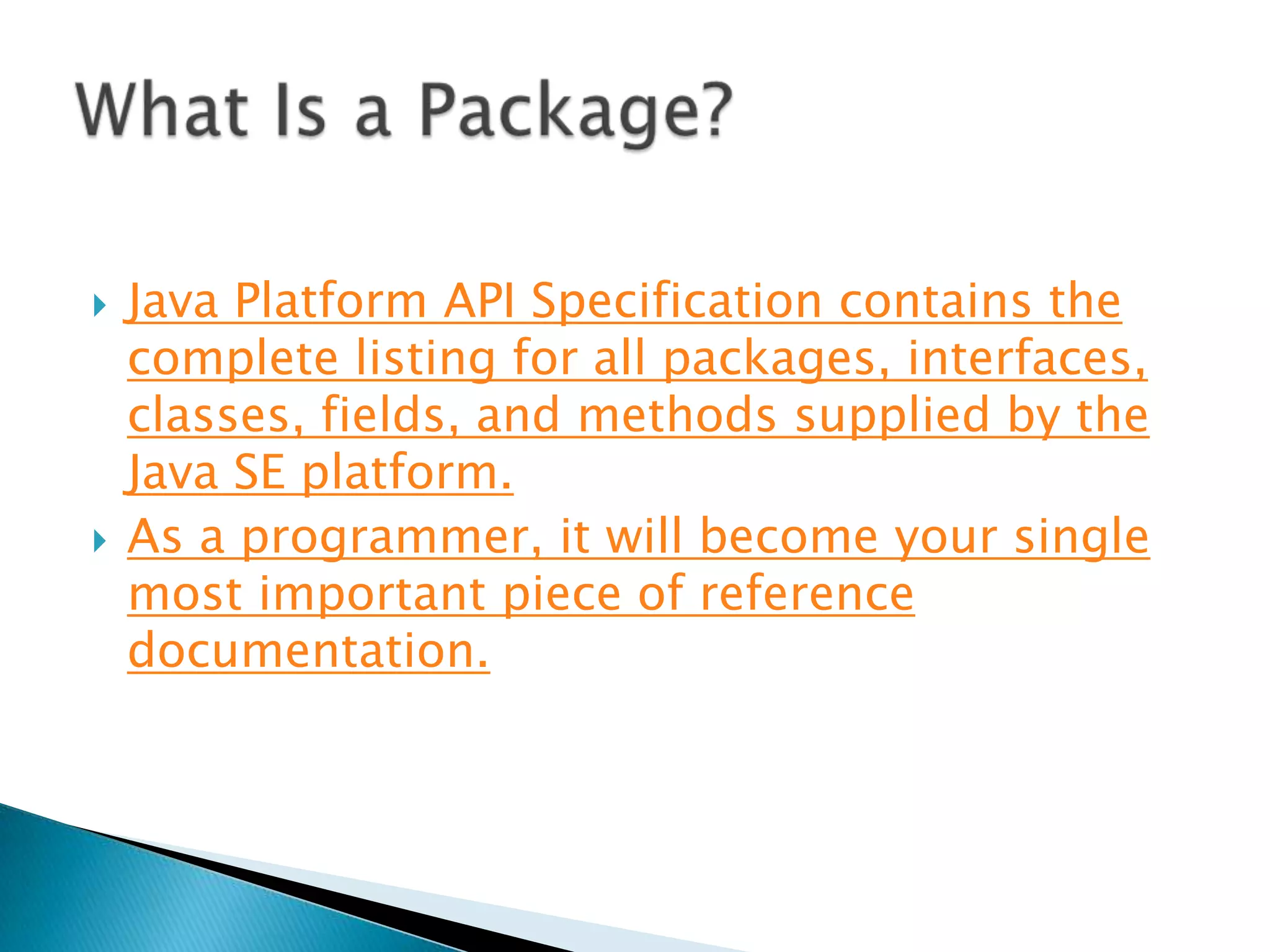This document discusses key concepts of object-oriented programming including objects, classes, inheritance, interfaces, and packages. It explains that real-world objects have states and behaviors, and software objects similarly encapsulate states as fields and behaviors as methods. Classes define common properties and a blueprint for objects. Subclasses inherit and extend classes, while interfaces define contracts. Packages organize related classes.
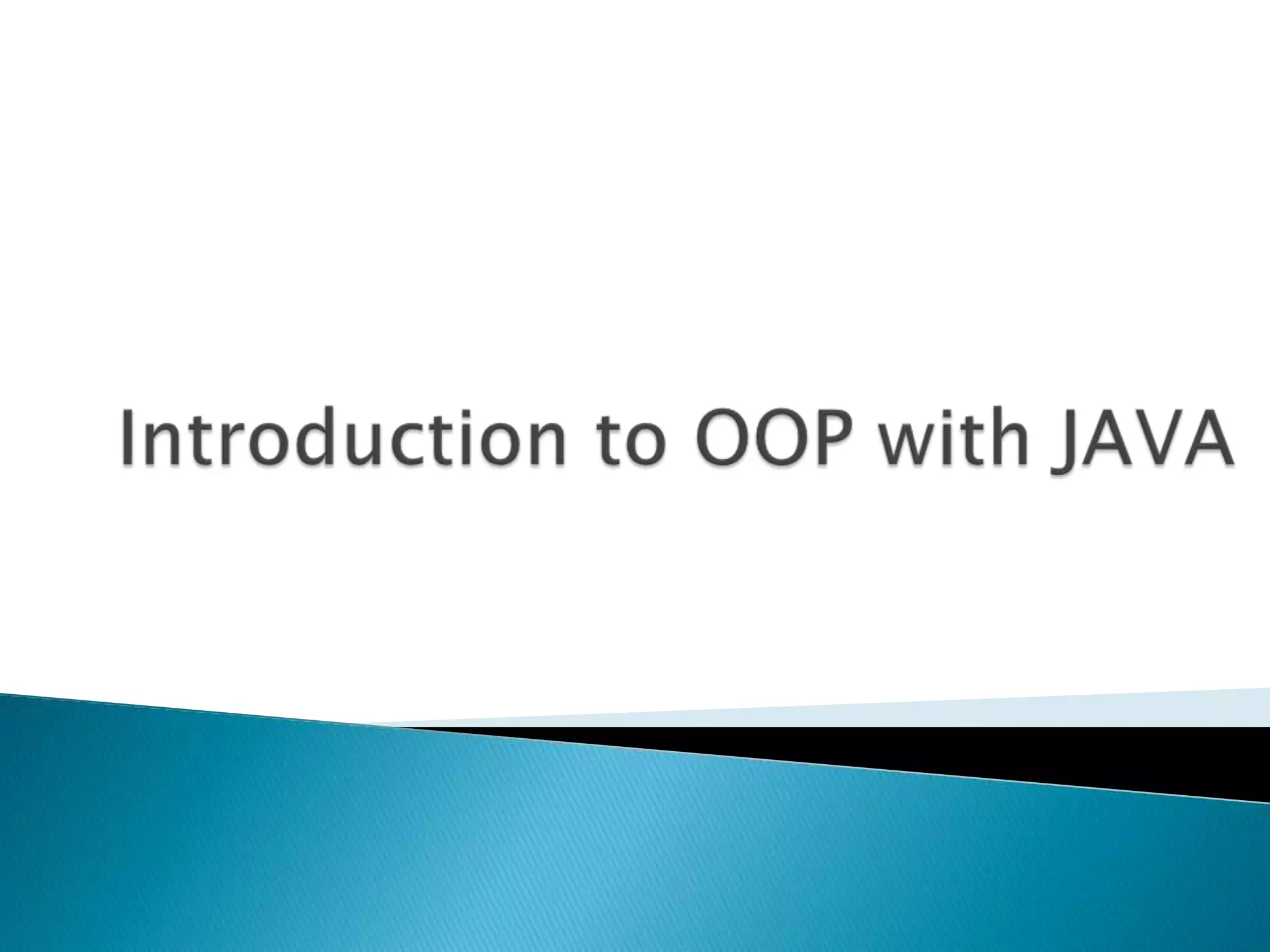

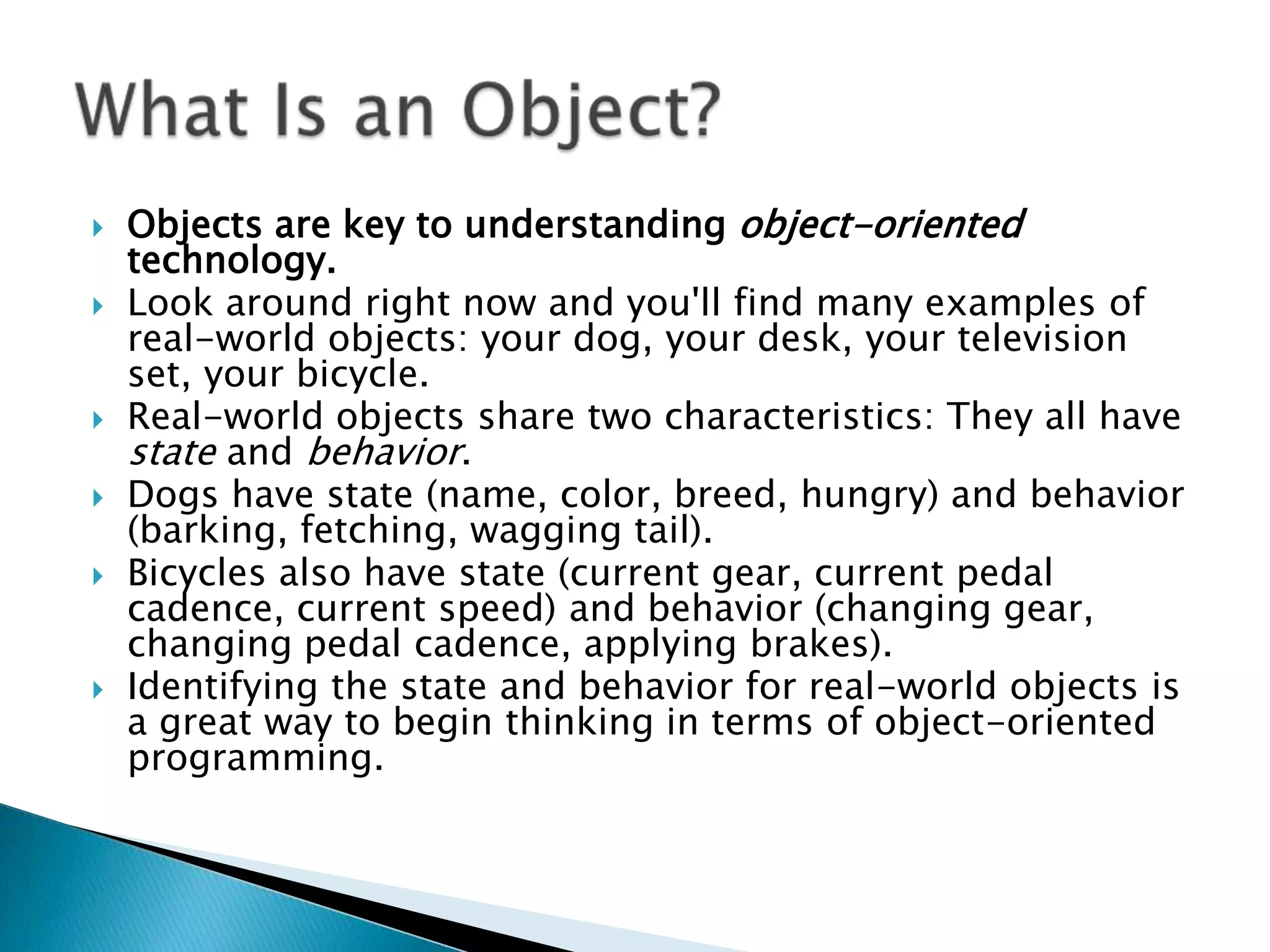
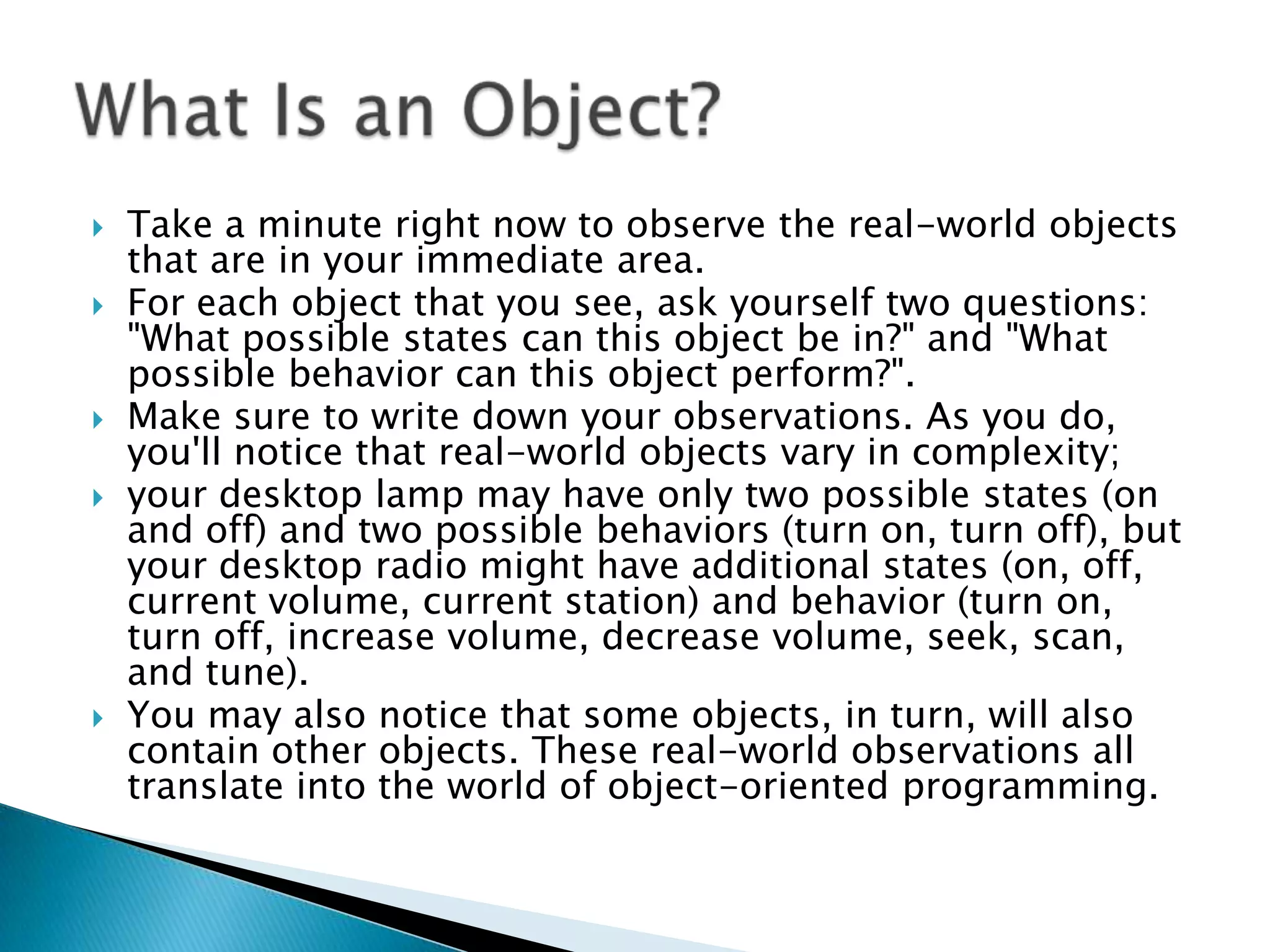
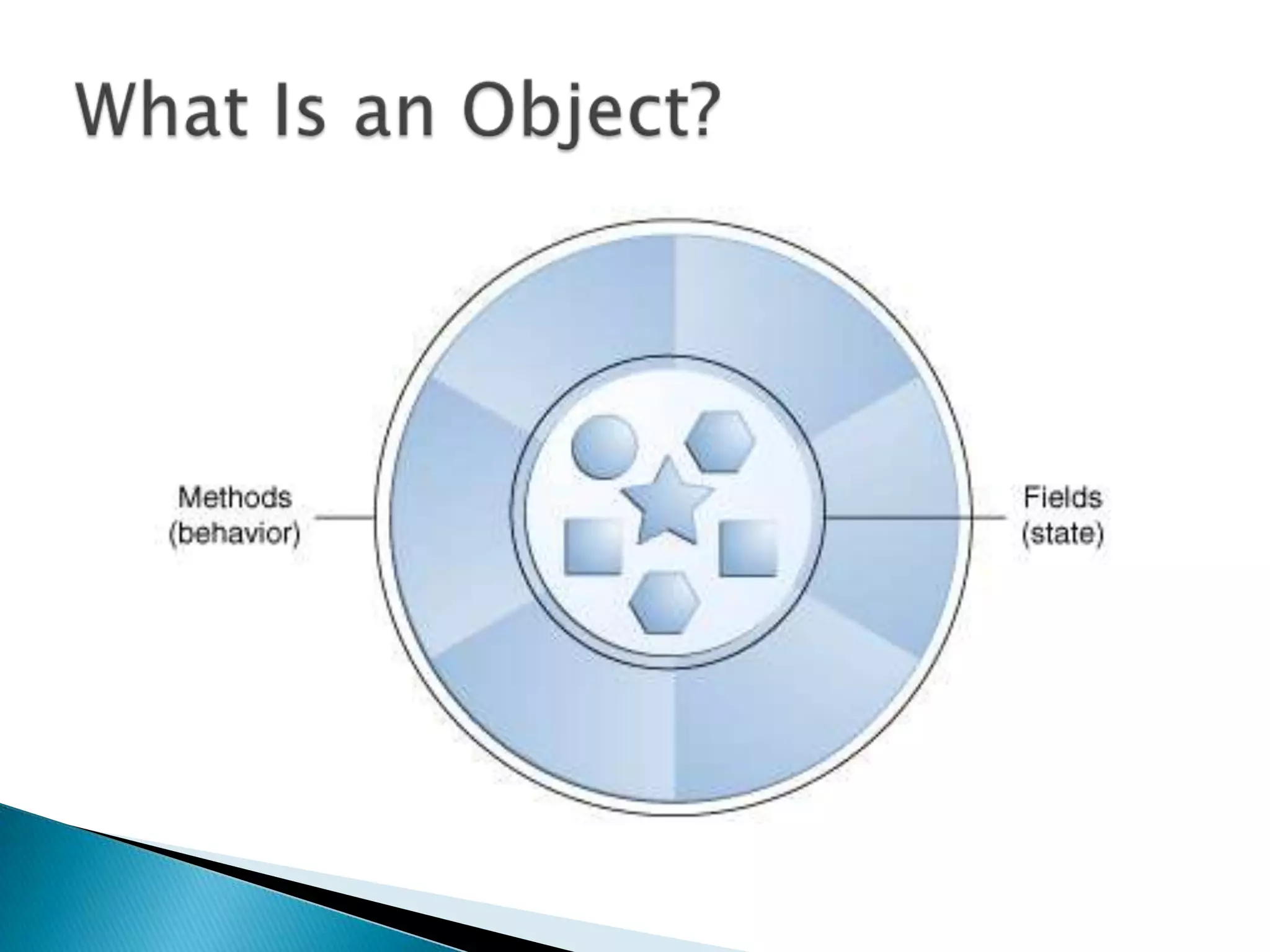

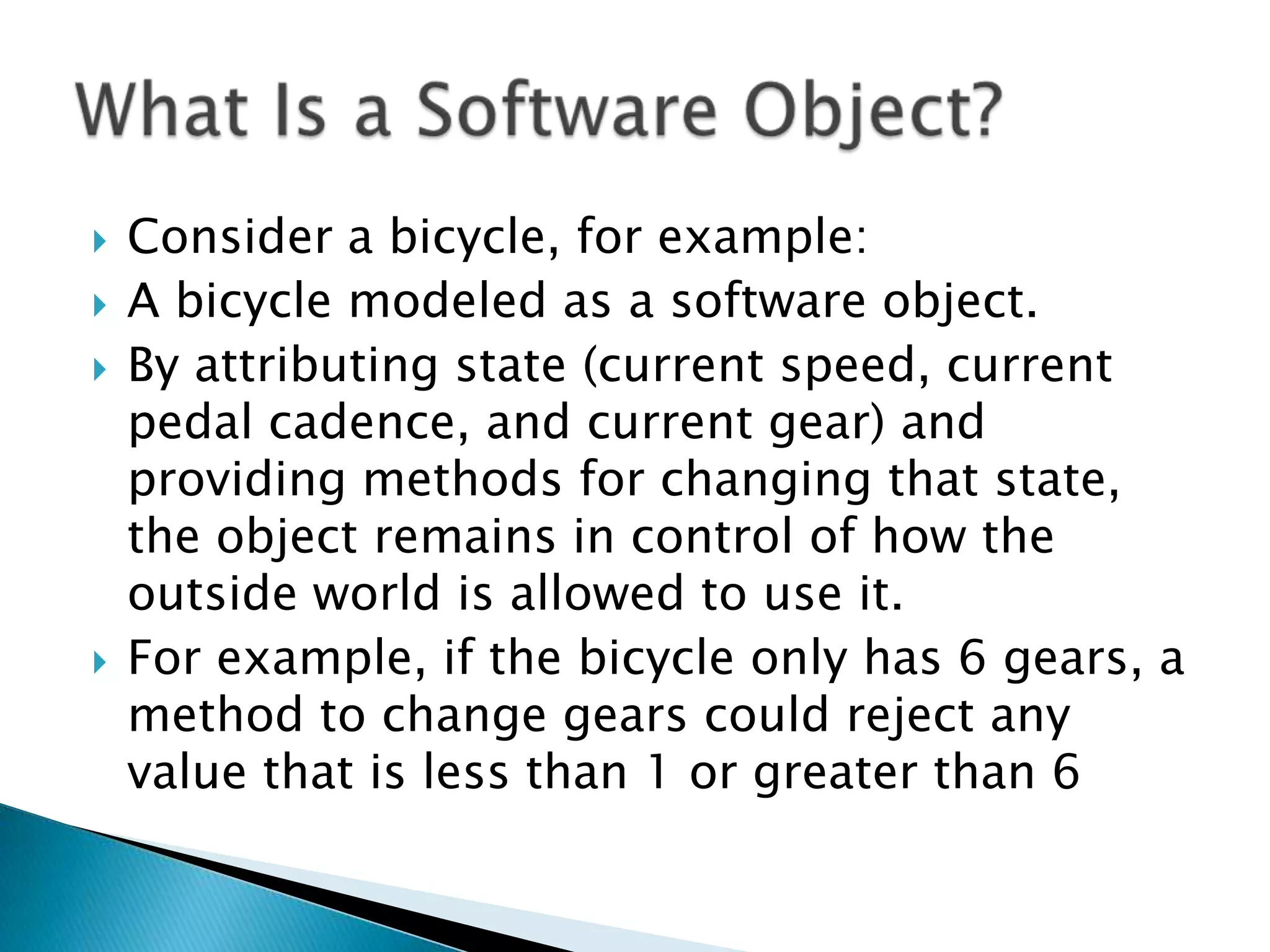

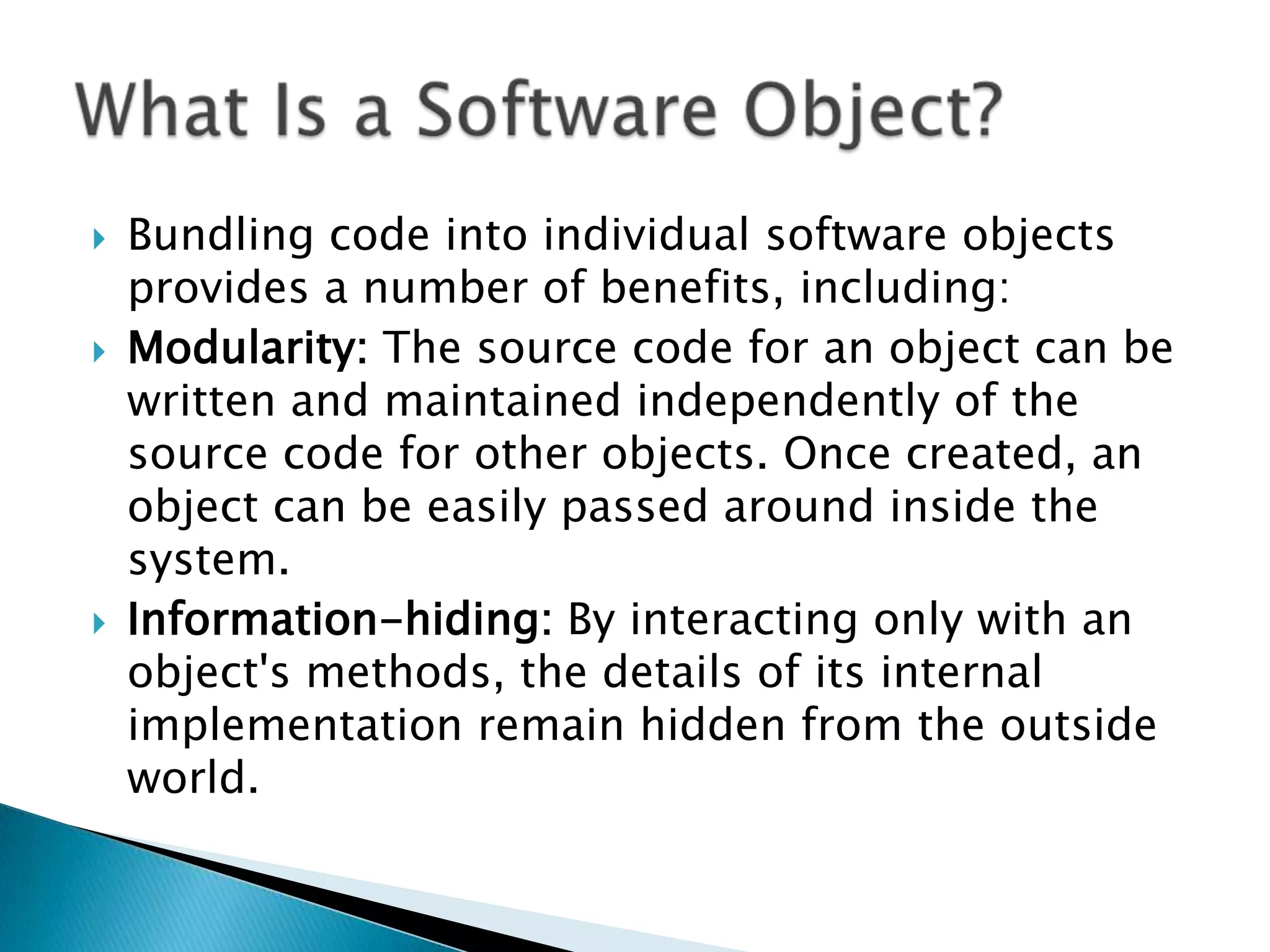
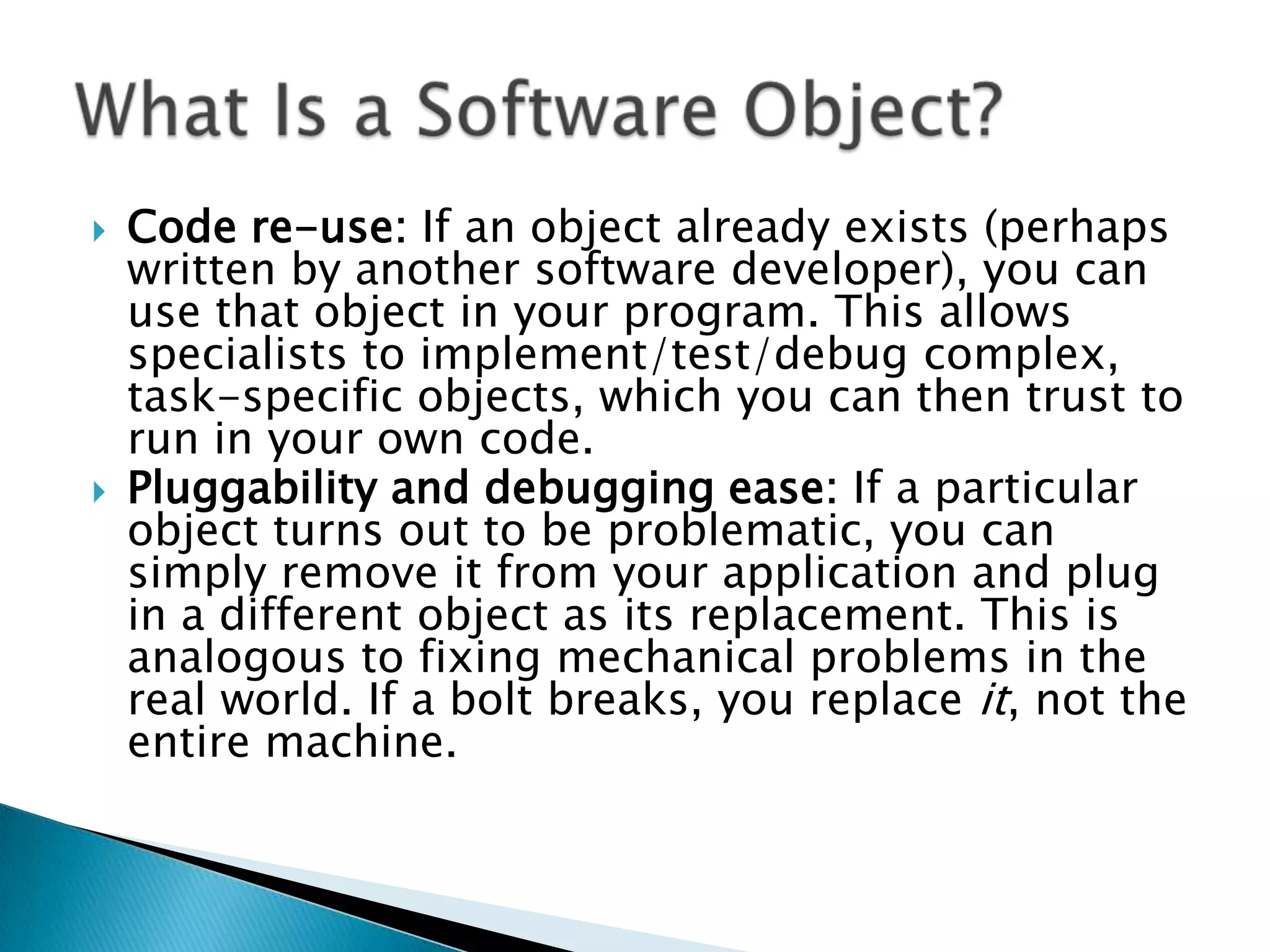
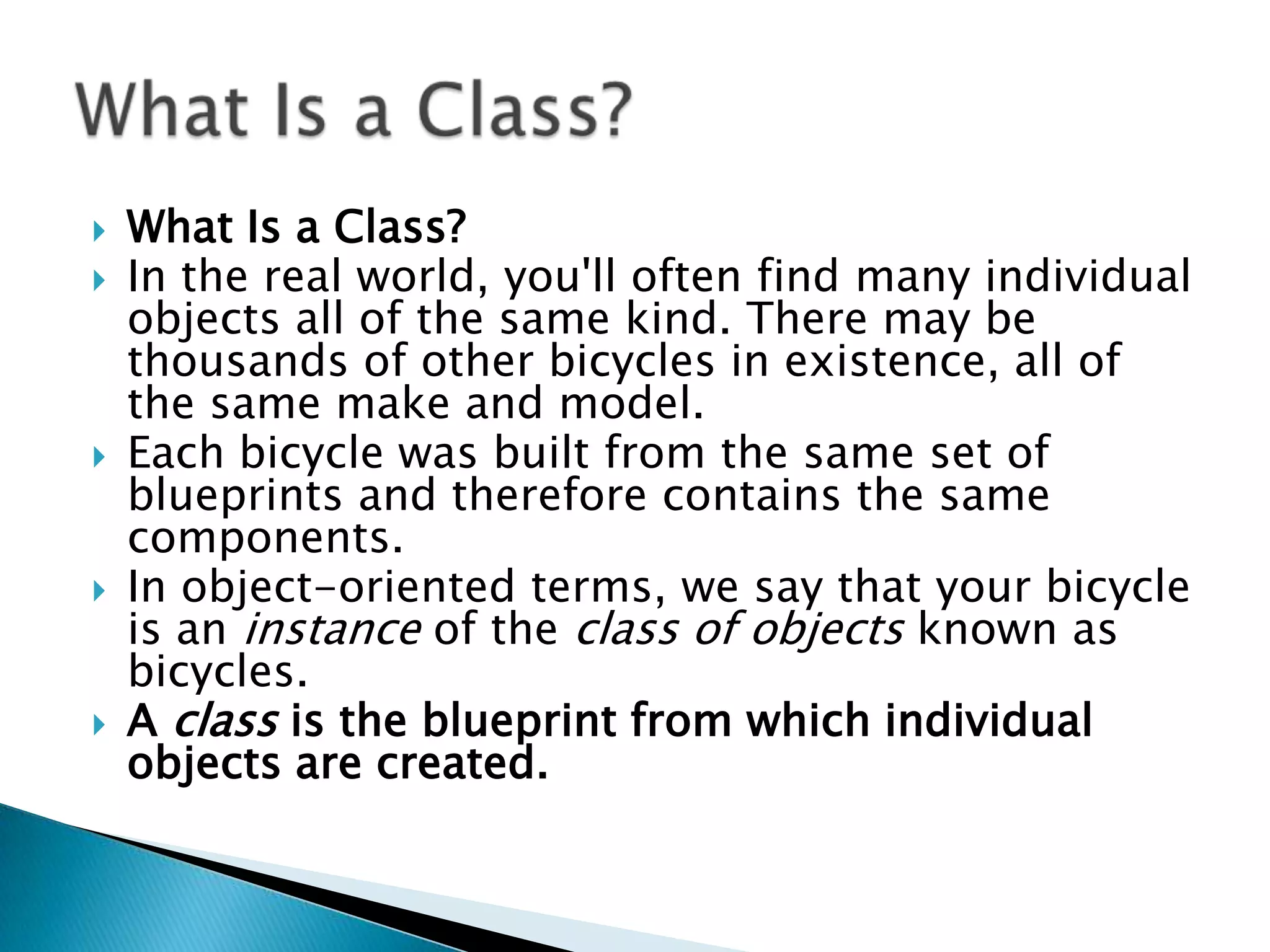
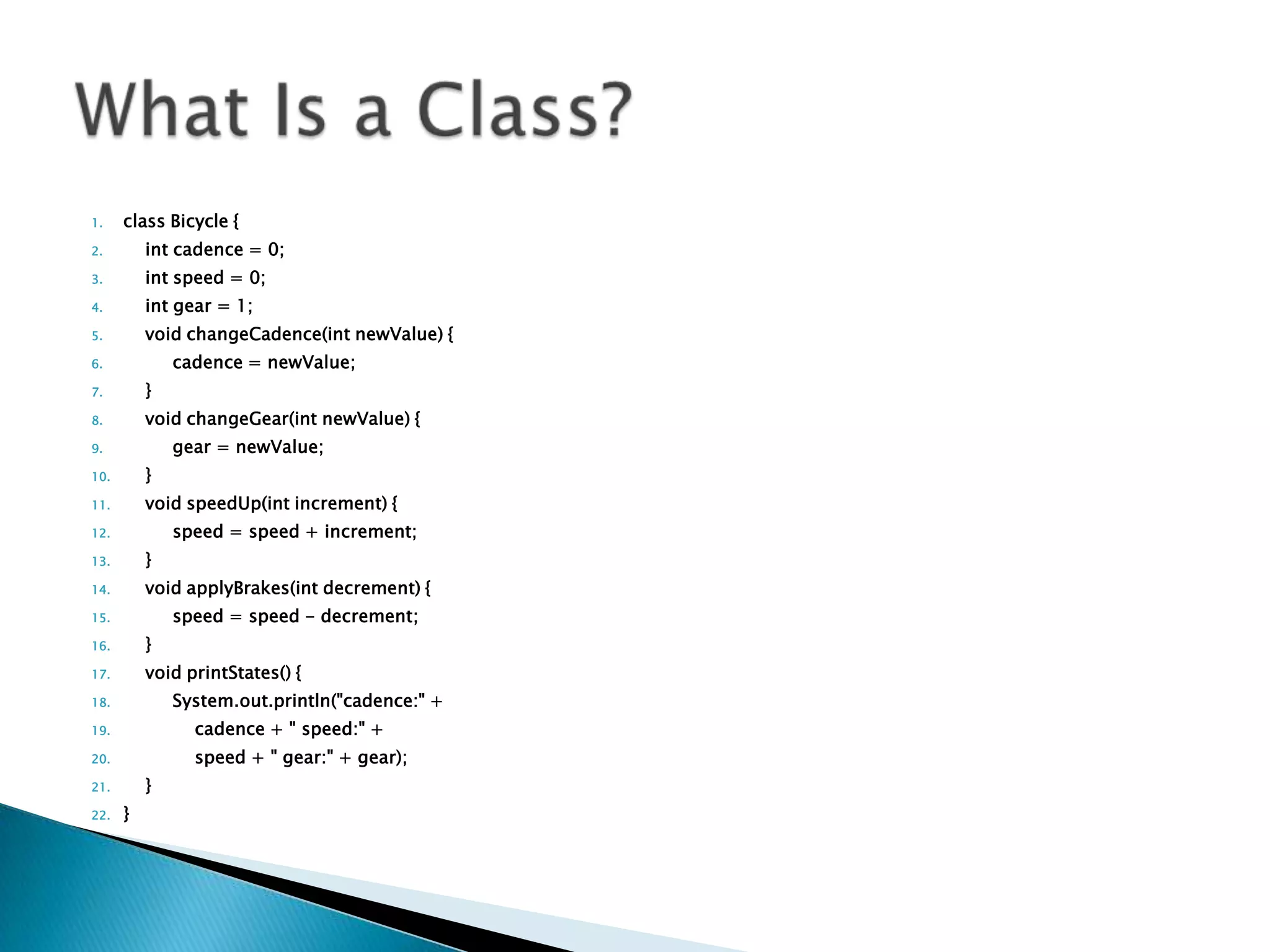
![1.
class BicycleDemo {
public static void main(String[] args) {
2.
3.
// Create two different
4.
// Bicycle objects
5.
Bicycle bike1 = new Bicycle();
6.
Bicycle bike2 = new Bicycle();
7.
// Invoke methods on
8.
// those objects
9.
bike1.changeCadence(50);
10.
bike1.speedUp(10);
11.
bike1.changeGear(2);
12.
bike1.printStates();
13.
bike2.changeCadence(50);
14.
bike2.speedUp(10);
15.
bike2.changeGear(2);
16.
bike2.changeCadence(40);
17.
bike2.speedUp(10);
18.
bike2.changeGear(3);
19.
bike2.printStates();
}
20.
21.
}](https://image.slidesharecdn.com/2oop-131206034618-phpapp02/75/2-oop-13-2048.jpg)
